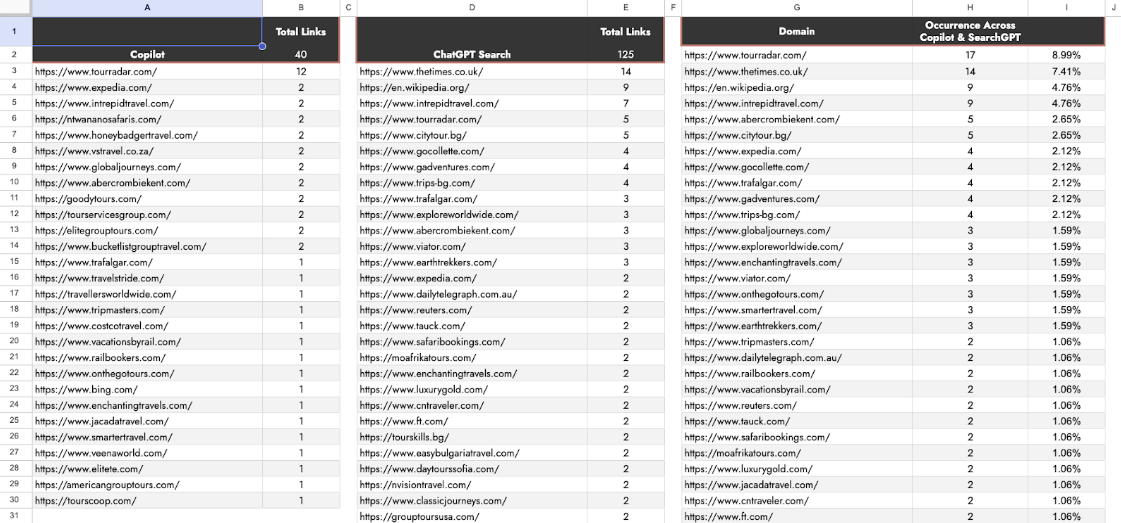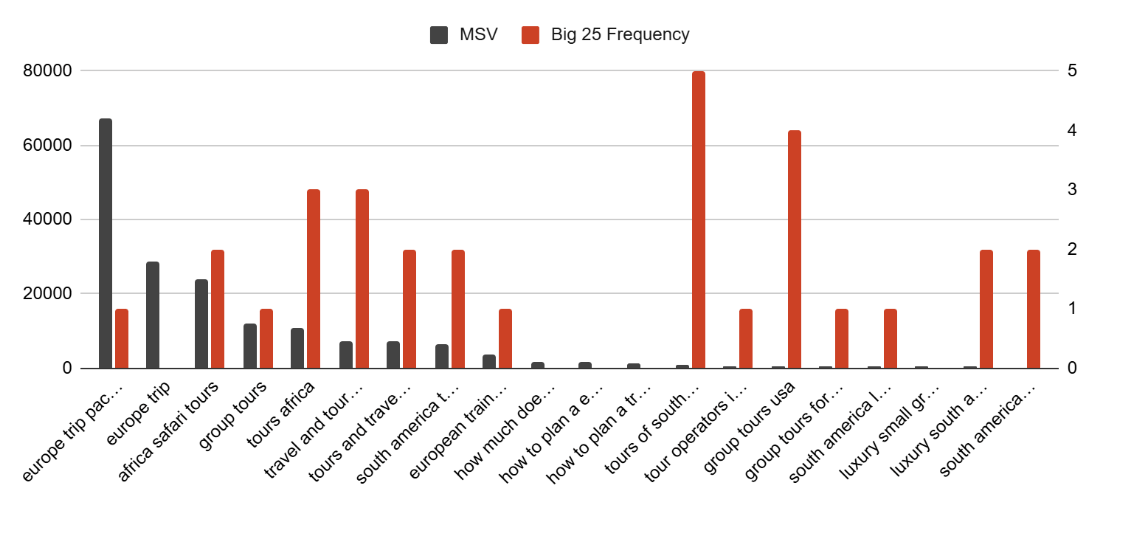Do LLMs favour bigger travel brands for travel queries?
Historically, Google has rewarded authenticity and consistency over time, leading to what some might call a “big brand bias”.
Google often rewarded large, established brands with a track record of reliability by giving them greater visibility. However, this trend seems less apparent in the new age of AI-driven tools like ChatGPT, Copilot, and other large language models (LLMs).
The impact of LLMs on brand visibility
As more users turn to LLMs for searches instead of Google, the way brands are discovered and engaged is changing.
Metrics like clicks, impressions, and direct traffic, which have long been the cornerstone of measuring success in search, are becoming less relevant in these AI-driven environments. Beyond just numbers, what’s at stake is something less tangible but equally important — brand touchpoints and discovery opportunities.
With fewer chances to appear in traditional search results, brands risk losing valuable moments to connect with potential customers. These touchpoints are vital for engaging consumers and participating in meaningful conversations about their needs.
Do LLMs have the same “preference” for bigger travel brands?
To see if LLMs demonstrate a similar level of “big brand preference”, we’ve performed searches for 20 high-monthly-search-volume (MSV) keywords to check the return frequency for 25 of the “larger” travel and tour operator brands (the likes of G Adventures, CostSaver, Intrepid, Cosmos etc.).
Where we see these larger brands prominently appearing in Google and Bing search results, the opposite was true of ChatGPT Search and Copilot results.

The macro trend here is that only 20 of the 25 queries surfaced larger travel brands, and even then, only in small numbers. Tour Radar appeared most frequently, and was visible 8.99% of the time — in contrast to Trafalgar, G Adventures, and Expedia, which each had just 2.12% visibility.
Both ChatGPT and Copilot returned a number of well-known news publications, alongside a number of “smaller” travel brands that don’t have the same organic footprints on Google and Bing.
Another interesting trend in the data was the frequency distribution of the larger travel brands being cited versus the total monthly search volume of the queries.

The larger travel brands appeared more frequently for queries in the travel keyword sample with a lower average monthly search volume than queries with a higher MSV. While this is based on Google MSV and is only correlative, it is interesting to consider whether this trend holds for larger clusters of travel keywords.
If this pattern is consistent, it could indicate greater opportunity and visibility for smaller travel brands in higher search volume queries outside of Google.
Google’s ‘Hidden Gems’
Google has attempted to counter criticisms of favouring big brands by introducing initiatives like the ‘hidden gems’ feature. This effort highlights lesser-known or user-generated content, offering smaller brands a chance to gain visibility. For many, this initiative felt like a step toward levelling the playing field.
However, the rise of AI tools presents a different kind of opportunity for smaller and more specialised brands. LLMs allow for a more tailored approach to content, enabling businesses to create hyper-focused and hyper-relevant material that aligns with specific stages of the user journey.
A shift in travel content strategy
Instead of focusing purely on generating clicks and traffic, businesses now need to prioritise customer engagement and visibility.
This means creating content that directly addresses the intersection of a brand’s product and the user’s needs. It’s about showcasing expertise in a way that resonates with potential customers at every stage of their journey.
For brands, this shift means asking key questions:
- How visible are you in your niche?
- Are you creating content that highlights what your product does and the value it provides?
- How well are you being considered for the specific queries that matter most to your audience?
The future of travel brand discovery
As search behaviour continues to evolve, businesses must adapt to stay relevant. Whether leveraging LLMs or embracing new opportunities within Google’s ecosystem, the focus should shift from pure traffic generation to meaningful customer engagement.
Smaller brands, in particular, have an opportunity to stand out by delivering niche-specific, highly specialised content that speaks directly to their audience’s unique needs.
This new landscape challenges brands of all sizes to rethink their approach to visibility and engagement. The question is no longer just about being visible to users during their multi-modal searches, but about becoming the most relevant and trusted answer at the right moment.